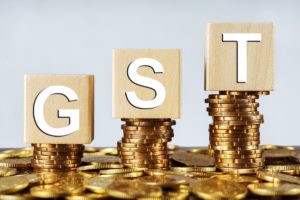One year of GST
The government called GST a game changer as it abolished several indirect taxes and brought them under one category. After the implementation of GST, tax slabs were changed several times, which resulted in the delay in refunds and technical glitches in filing returns.
With the vision to ease the existing Indian tax regime, the BJP government on July 1, 2017, had introduced the goods and services tax (GST), which completed one year in 2018. The tax reform merged 17 central and state taxes like excise duty, VAT and octroi into a single levy, GST. Under the ‘one nation, one tax’ regime, the country observed extensive changes in businesses. Not only that, the tax regime had a huge impact on the common people as well.
However, in terms of revenue, India collected indirect taxes under the GST INR 7410 billion for the year ended March 31. The government has set a target of INR 13,000 billion, assuming a 20 pc rise in the average monthly collections.
How has GST proved to be beneficial in its first year?
The introduction of GST has led to digitisation thus increasing transparency. From refunds to returns, the data for everything is online. As per government reports the introduction of the new tax regime has helped in curbing corruption by eliminating the middleman. GST has also helped in decreasing prices that proved beneficial for the poor and the middle class. A large number of daily-use items are either exempt or are in 5 pc slab. Almost 95 pc of items fall in or below 18 pc slab, the government said.
According to a PIB (press information bureau, government of India) release of March 23, 2018, the average growth rate of the Index of Industrial Production (IIP), considered as an indicator for industrial activity, was 5 pc between July 2017 and January 2018 in comparison to 3.9 pc in the year-ago period. Post-GST industrial activity has accelerated. The GST rate was reduced from 28 pc to 18 pc and 5 pc for a lot of consumer goods. The applicability of various provisions (like TCS/TDS, reverse charge and form of tax returns) was deferred for a smooth transition.
The entire process of registration, tax payments, return filing and refunds under GST, is driven by technology. GST implementation along with the rollout of the e-way bill system has ensured a seamless audit trail of all transactions in the supply chain. The entire process has not only expanded the taxpayer base but to a large extent, reduced under-invoicing of transactions and no-bill transactions.
“With the rollout of GST, India witnessed a plethora of changes in the economic atmosphere of the country. The resulting changes were joyous for the most of sector of the economy barring a few exceptions. The GST led to a single national market with the removal of various taxes and state barriers resulting in the fall in logistics cost and ultimately the prices of goods. The introduction of a single tax structure under GST, the government has been able to increase revenue collections due to the continuously increasing tax base. The merger of all indirect taxes into a single tax structure resulted in benefits to various sectors like FMCG, Start-ups, and Real Estate etc. It also put a curb on the illegal transactions through the implementation of the e-way bill and online uploading of invoice details. The availability of all facilities of filling and payment electronically has curbed tax evasion,” Vishal Raheja, DGM Taxmann, one of the leading publishers of Tax and Corporate Laws in India, told Media India Group.
The challenges for the second innings
The World Bank in a report earlier this year noted that among the 115 countries that have a unified tax system, India’s is the most complex and with the second-highest rate. The GST has four tax slabs – 5 pc, 12 pc, 18 pc, and 28 pc, while 49 other countries have just one. Analysts are of the opinion that the government should simplify the GST and reduce the number of tax slabs. Reports claim that government is considering merging GST rates of 12 pc and 18 pc into a single consolidated tax rate to reduce the multiplicity of taxes.
At a recent event, the Finance Secretary Hasmukh Adhia said that it was the technology that failed a smooth transition to the era of Goods and Service Tax from the previous indirect tax regime. A LocalCircles survey done after GST completed its one year showed that a whopping 50 pc of businesses are still having trouble logging in and submitting information on the GSTN. A lot of businesses also feel that even after one year, the GST continues to be time-consuming and costly. Further simplification of the filing process through a single filing system is expected from the government in its second year.
“The country also faced various challenges in the initial phase of GST implementation due to lack of a proper infrastructure and computer awareness. This was the major reason for suspending GSTR-2 and GSTR-3. Currently, Govt. is working to bring single form return because, in absence of GSTR-2, invoice matching cannot be performed accurately which was the backbone of GST,” added Vishal.










